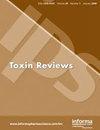过硫酸盐法与碳载磁铁矿纳米粒子结合去除水溶液中马拉硫磷杀虫剂(Fe3O4@CNT)在紫外线辐射下
IF 2.4
4区 医学
Q2 TOXICOLOGY
引用次数: 0
摘要
摘要马拉硫磷是世界上最常见的杀虫剂之一,其在水生环境中的持久存在对人类健康和生态系统构成了严重威胁。在这项研究中,过硫酸盐和磁铁矿纳米颗粒负载在碳上的联合工艺(Fe3O4@CNT)在紫外光的存在下,将马拉硫磷作为一种耐化学性化合物在污染水中分解。Fe3O4@CNT合成,然后使用XRD折射、电子显微镜(FESEM)、傅里叶变换红外光谱(FTIR)和Brunauer-Emmett-Teller进行表征和表征。在这种混合过程中,马拉硫磷的分解发生在pH=5,2 mmol过硫酸盐和0.4 g,共Fe3O4@CNT在60 分钟烤焦实验结果表明,硫酸盐、羟基和紫外线自由基参与了马拉硫磷的最佳分解,该工艺能够从水中纯化马拉硫磷。本文章由计算机程序翻译,如有差异,请以英文原文为准。
Removal of malathion insecticide from aqueous solution by the integration of persulfate process and magnetite nanoparticles loaded on carbon (Fe3O4@CNT) in the presence of ultraviolet radiation
Abstract Malathion is one of the most common insecticides in the world, and its persistence in aquatic environments poses a serious threat to human health and ecosystems. In this study, a combined process of persulfate and magnetite nanoparticles loaded on carbon (Fe3O4@CNT) in the presence of ultraviolet light was used to decompose malathion as a chemically resistant compound in contaminated water. Fe3O4@CNT was synthesized, and then characterized and characterized using XRD refraction, electron microscopy (FESEM), Fourier-transform infrared spectroscopy (FTIR), and Brunauer-Emmett-Teller. In this hybrid process, the decomposition of malathion occurred at pH =5, 2 mmol persulfate, and 0.4 g of Fe3O4@CNT at 60 minutes. The results of sconing experiments showed that sulfate, hydroxyl, and ultraviolet radicals are involved in the optimum decomposition of malathion and this process was able to purify the malathion from the water.
求助全文
通过发布文献求助,成功后即可免费获取论文全文。
去求助
来源期刊

Toxin Reviews
医学-毒理学
CiteScore
6.80
自引率
0.00%
发文量
36
审稿时长
>12 weeks
期刊介绍:
Toxin Reviews provides an international forum for publishing state-of-the-art reviews and guest-edited single topic special issues covering the multidisciplinary research in the area of toxins derived from animals, plants and microorganisms. Our aim is to publish reviews that are of broad interest and importance to the toxinology as well as other life science communities. Toxin Reviews aims to encourage scientists to highlight the contribution of toxins as research tools in deciphering molecular and cellular mechanisms, and as prototypes of therapeutic agents. Reviews should emphasize the role of toxins in enhancing our fundamental understanding of life sciences, protein chemistry, structural biology, pharmacology, clinical toxinology and evolution. Prominence will be given to reviews that propose new ideas or approaches and further the knowledge of toxinology.
 求助内容:
求助内容: 应助结果提醒方式:
应助结果提醒方式:


